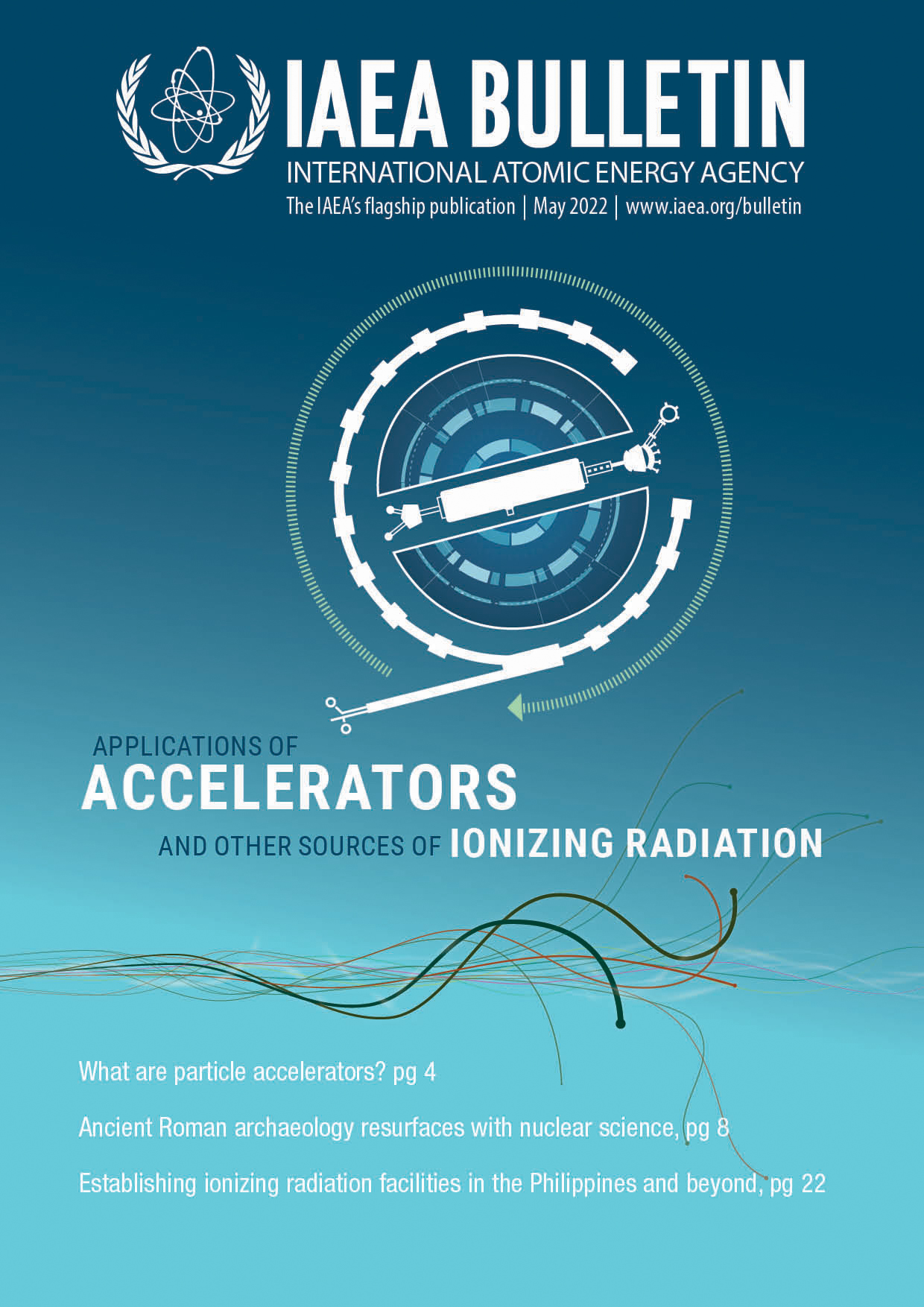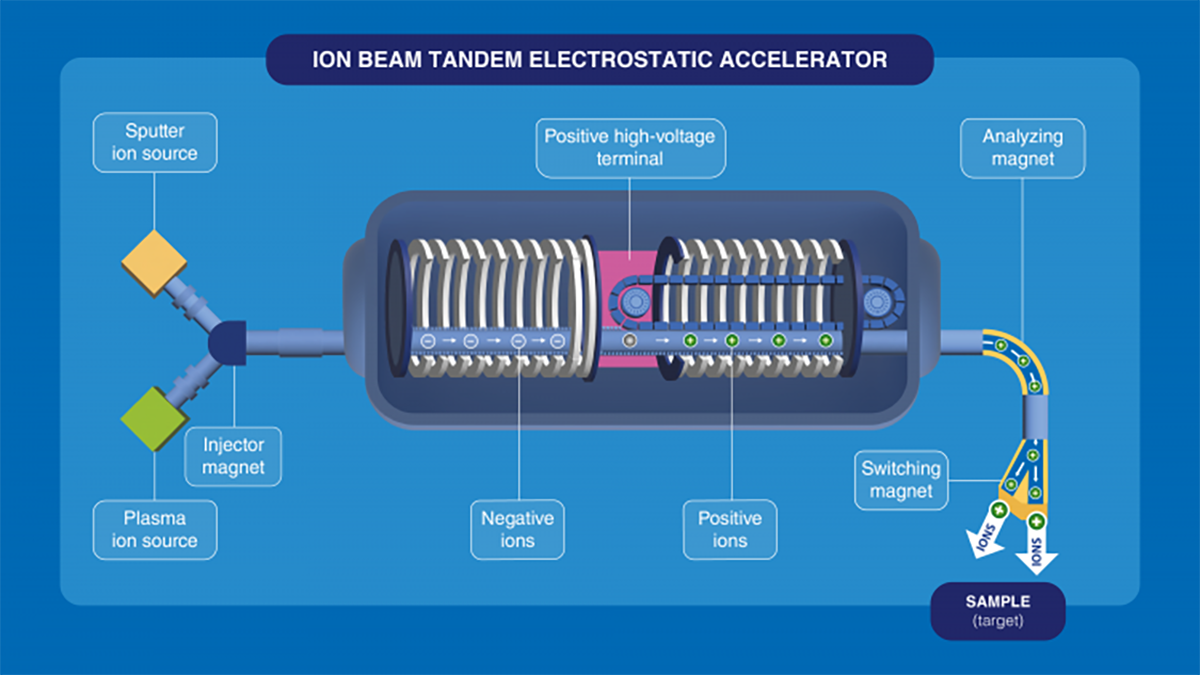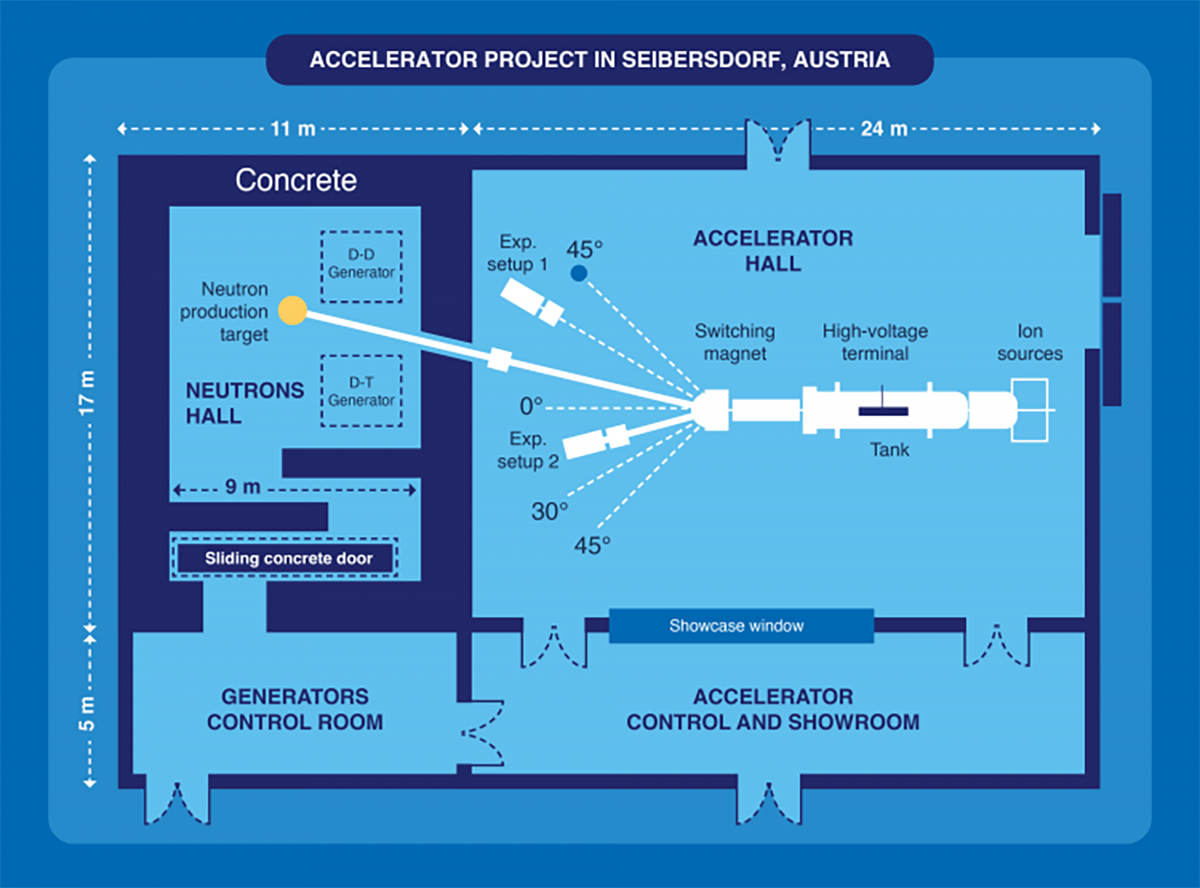In the case of tandem electrostatic accelerators (see figure), ion beams are bombarded into a material sample or object. The interaction with the material can force the ions in the beam to change course, or the collision can cause particles or radiation to be released, mainly in the form of X-rays or gamma rays. This radiation can then be detected and analysed.
The properties of the energy and of the emitted radiation reveal details about the composition of the bombarded sample, such as whether it is crystalline or not, its hardness, and physical properties which are of interest for emerging technologies. Bombarded sample materials or objects may also vary in shape and phases of matter, and can be thin foils; small pellets of soil; human, animal or plant cells; seeds; rocks; liquids; or even historical artefacts or statues. Depending on the material’s form and composition, bombardment may occur in a vacuum or in air.
Due to their unique analytical and modification capabilities, accelerated ion beams are used in many applications. In plant mutation breeding, ion beams are used to irradiate plant material or seedlings in order to to accelerate their natural evolution process by inducing mutations, to develop higher yielding or disease and drought resistant crops.
Protons and other ions are used extensively to produce the radioisotopes needed to create radiopharmaceuticals for diagnosing and treating cancer. In cancer therapy, proton and carbon ion beams are used to bombard cancerous tumours, especially when no alternative therapy is possible. These beams deliver energy to a tumour to heat it up and disintegrate it.
With increasing demand for stronger and better materials, a wide variety of ion beams are also used to modify material properties, reinforcing their resistance. One example is for spacecrafts or fusion reactors which require materials to operate under harsh radiation environments.


